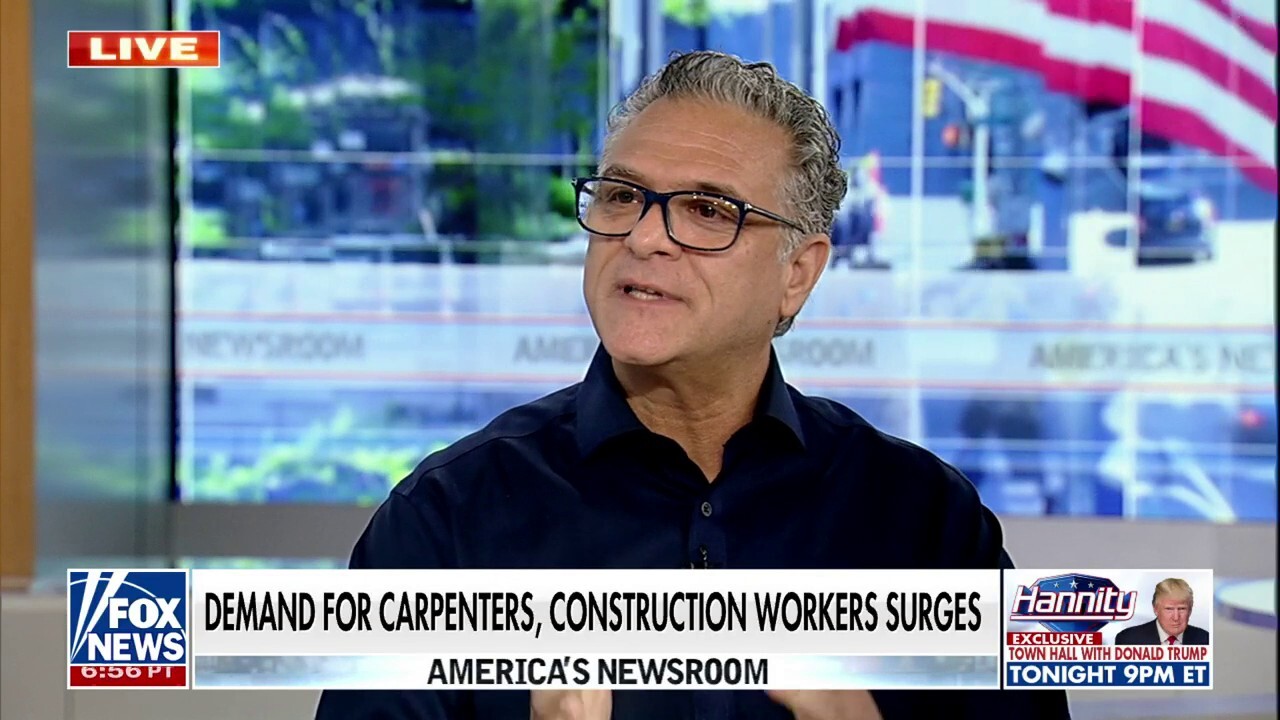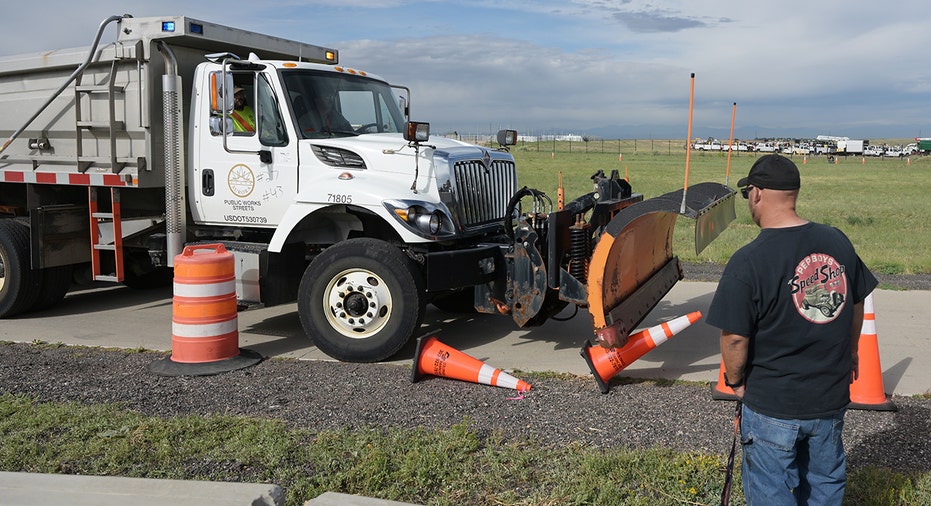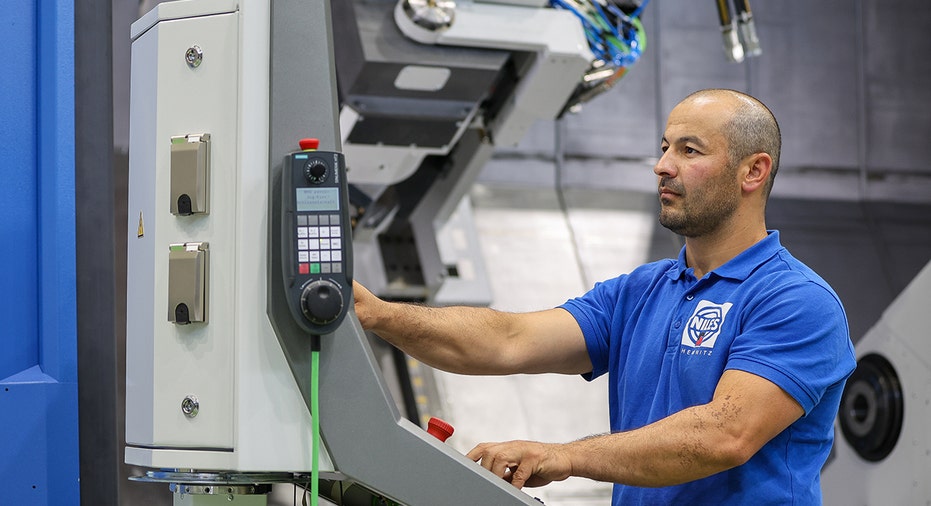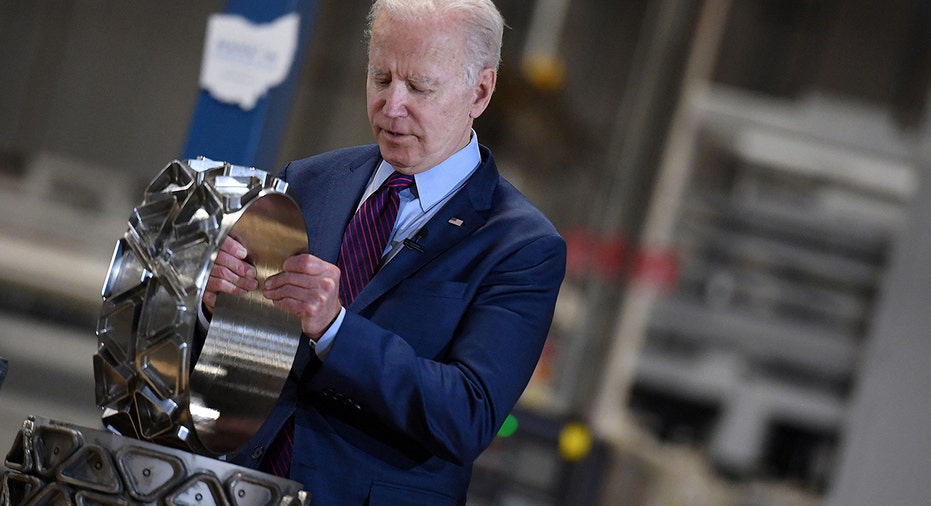Job expert pushes back on cultural 'stigma' having a 'disturbing' impact on skilled work, generational handoff
Blue-collar jobs see double-digit demand as industries try to integrate US supply chain
Skilled labor market seeing ‘very disturbing’ young worker participation rate: Andrew Crapuchettes
RedBalloon CEO Andrew Crapuchettes speaks to Fox News Digital about the stigma attached to blue or mixed-collar jobs.
A cultural stigma around traditional "blue-collar" jobs runs alive and well — and could potentially hurt the next workforce generation and America’s infrastructure.
"You're not just a widget manufacturer. You're not just an excavation company. You are building America. You're building a future for your family. You're learning the work ethic that leads to good souls for your kids. There's more to it than just work," RedBalloon CEO Andrew Crapuchettes told Fox News Digital.
From electricians and plumbers to homebuilders and stonemasons, the U.S. labor market is seemingly desperate to fill skilled labor positions.
Since the start of this year, there have been more than 770,000 skilled job postings from nearly 95,000 different employers across the country, according to data from PeopleReady Skilled Trades.
SKILLED TRADE WORKERS NEEDED TO HELP ‘GET A LOT MORE DONE’: JOHN CATANEO
Data points from that same study indicate that demand for carpenters has gone up 23% from March to May, while stonemasons are up 45% and construction laborers are experiencing an 18% demand surge in the same time period.

"We don't have enough labor" in the skilled trades, RedBalloon CEO Andrew Crapuchettes told Fox News Digital. (Getty Images)
The sudden demand boom likely comes from efforts to vertically integrate America’s supply chains after pandemic and geopolitical disruptions, Crapuchettes argued, but a crucial part of the puzzle is currently missing.
"Unfortunately, we have this cultural issue where a lot of the baby boomers, which are one of the wealthiest generations ever, is they've passed down to the next generation, they said, ‘I worked really hard in a factory, or I worked really hard early on, and then I was able to build a career, and I don't want that for my kids or my grandkids,’" the CEO explained.
"And so there's this cultural stigma associated with those blue-collar, mixed-collar jobs," he added. "There are lots of opportunities to work hard, not build $200,000 of school debt, and still be able to support a family and live a really good life. But there's a stigma associated with this."
Skilled trade workers needed to help 'get a lot more done': John Cataneo
Gateway Plumbing & Heating owner John Cataneo says there's room for creativity and profitability in many trade jobs, which are in high demand.
The labor marketplace expert also pointed out that younger workers are part of a "social media generation" that have been swayed towards white-collar jobs.
"There's just people that don't want to go into this space. They don't want to be doing construction. They don't want to be doing long hours out in the sun or out in the cold winter," Crapuchettes said. "But we need people who are going to build houses. I'm less concerned about the frequent housing booms and busts that are associated, because we don't have enough people to get the job done."
Younger generations are "not used to the rigor" associated with construction, manufacturing, oil drilling and other industries, the CEO expanded.
Skilled labor jobs "are building America," RedBalloon CEO Andrew Crapuchettes said. | Getty Images
"And so we have a generation that has not had to work hard, has not experienced the blisters and the calluses that come along with chopping wood all day," Crapuchettes said. "And so they don't want to go into that type of work. But it's actually good for your soul."
While he doesn’t believe the skilled labor shortage could push the housing market to fall "off a cliff," Crapuchettes did say it adds a barrier to affordable housing.
"You're just going to have demand for houses and you're going to have prices going up," he said. "People need to focus on getting those jobs [filled], getting the training so that we can have better housing at an affordable price."
Bad policies are contributing to America’s skilled worker gap: Kevin O’Leary
O’Leary Ventures Chairman Kevin O’Leary discusses the economy’s skilled worker gap and higher education in America.
Another challenge skilled labor employers face includes the young workforce’s unreliability. In 2000, the labor participation rate for 16 to 19-year-olds stood around 50% — as of last month, that number is in the mid-30 percentile, which Crapuchettes called "very disturbing."
"One employer told me when they're hiring off Indeed.com or one of the mega job boards, they have between 10% and 30% of the people even show up for the interview, let alone the job," Crapuchettes noted. "And so that's what employers are focused on and desperate for today: it's just people who show up, work hard, have a good work ethic."
Technical companies dealing with shortage of young, skilled trade workers
Technical companies are having a hard time replacing older trade workers who are retiring. There haven't been enough young people training to fill open roles.
Despite the skilled labor market being in potential "rough waters" ahead, RedBalloon’s CEO encouraged younger workers to explore junior or community college programs for mixed-collar jobs, where hands-on applications are combined with modern computing and technology.
"We have a lot of baby boomers who are exiting the market, who have a lot of the skills and knowledge and abilities that simply aren't going to be replaced by the next generation if we don't make some changes soon," Crapuchettes said.
GET FOX BUSINESS ON THE GO BY CLICKING HERE
US work ethic is 'truly on the ropes': Mike Rowe
Mike Rowe Works Foundation CEO Mike Rowe joins 'Cavuto: Coast to Coast' to discuss the costs of higher education, work ethic in the U.S. and the mission of his foundation.
Mom and pop, smaller trade business owners should be "painting a picture" for the next generation about skilled labor being "meaningful, exciting, good work," the job expert advised.
"Just helping people realize that it's bigger than them, it's bigger than just the opportunity to earn a paycheck, but to focus on building the future for the next generation and for their generation. I think if people could do that, if you could paint a picture bigger than just earning a paycheck, then I think the next generation is going to get into that," he said.




























